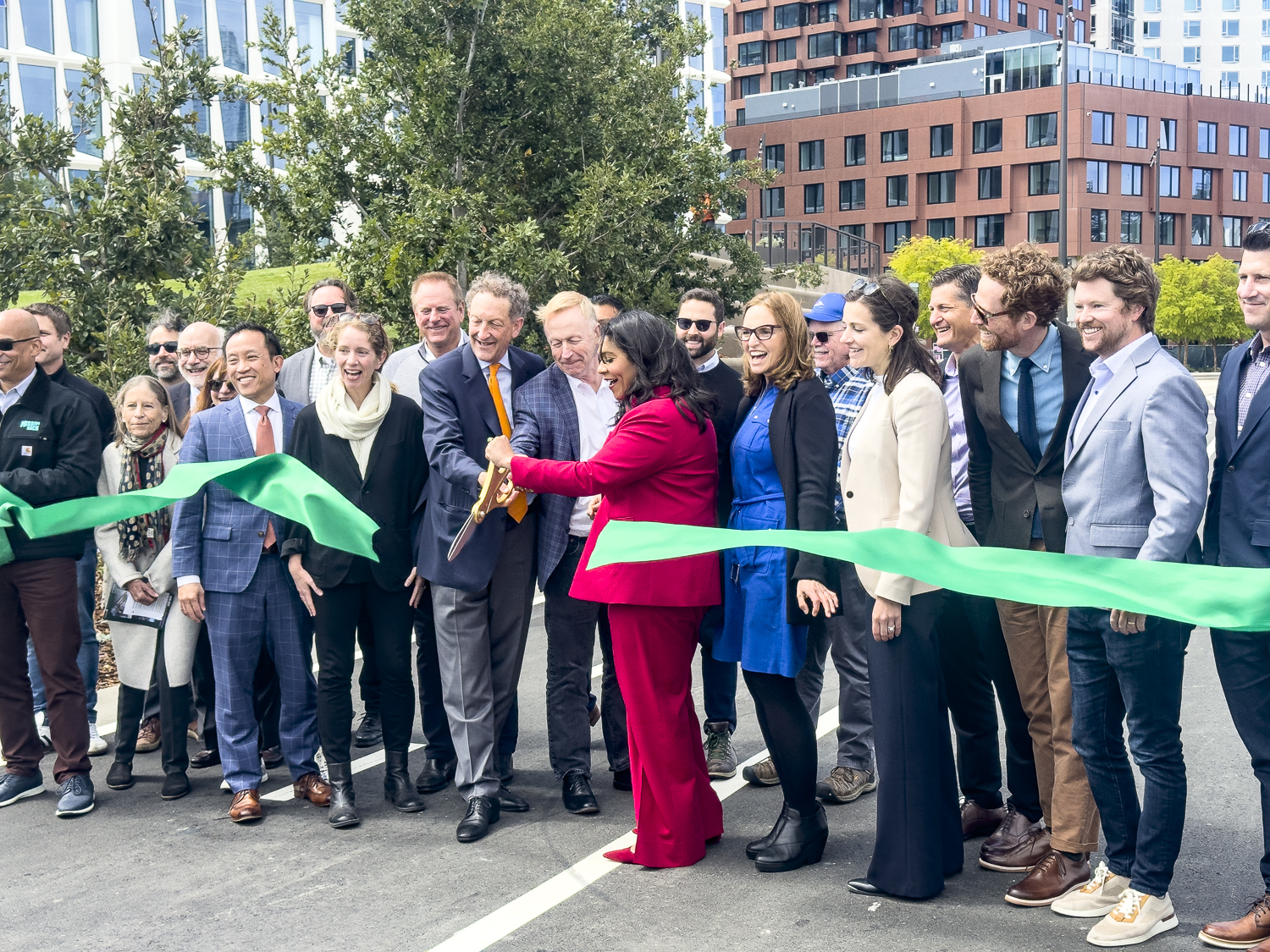
On Thursday April 25th, I was honored to attend the ribbon cutting for the Mission Rock Development’s China Basin Park. It was a beautiful day, and the event was attended by Jack and Larry Baer of the San Francisco Giants, leadership from Developer Tishman Speyer, Webcor Builders (the lead civil contractor), SCAPE (landscape designer), Port Director Elaine Forbes, Public Works Director Carla Short, Mayor London Breed, and many other City leaders and advocates who supported this project over the past 15 years. Mission Rock is an exciting multi-use development due south of the San Francisco Giants’ Oracle Park sitting across from McCovey Cove, directly behind right field of the ballpark. Fun fact – As a 3rd grader I wrote a career day report about hoping I could play Center Field for the Giants… it’s pretty cool that by working on this project, I was only about 500 feet off!

Joking aside, this was an incredibly complex project delivered through COVID. As an undergraduate, I studied Public and Private Partnerships (PPPs), but never could have guessed just how complex these arrangements and real estate deals can be to put together. I have become convinced that Structured Collaborative Partnering needs to become a tool that will enable this type of project to achieve exceptional outcomes while becoming more manageable and satisfying to deliver.
This article will serve jointly as a celebration for this great team and also to share a few of the key lessons I learned along the way to help establish this as a Partnering model for PPPs in the future.
- Understand the Team
- Structure for Success
- Service Orientation
1. Understand the Team
As stated earlier, an incredibly complex team delivered the Mission Rock Development. Managing this complexity was our top priority and frankly, identifying “who owned what” was a constant topic in our partnering sessions. The eight-acre Mission Rock development resides on Port of San Francisco property. The development deal was put together as a collaboration between the San Francisco Giants and Tishman Speyer called Mission Rock Partners (MRP). The electricity and water for Mission Rock is provided by the San Francisco Public Utilities Commission (SFPUC) and the developers created a District Energy System (DES) with its own blackwater treatment plan to provide recycled water and advanced water treatment to the site. The construction oversight is provided by San Francisco Department Public Works Task Force team and consultant staff who report to the City Engineer and Public Works Director. Further, the San Francisco Municipal Transportation Authority (SFMTA) guide the boundary of the parcel and the design of the traffic lights.
Adding to this complexity, the civil project had to be delivered simultaneously with the vertical parcels due to the need to get alignment around the City’s first ever implementation of Lightweight Cellular Concrete (LCC). The 10-15 foot layer of LCC offered a more efficient way to raise the shoreline to combat sea level rise, while avoiding the additional weight of soil that would settle over time, resulting in long-term performance and maintenance costs.
To summarize, we had an incredibly complex “owners team,” requiring high level representation from the Port, Public Works, SFPUC Water and SFPUC Power, SFMTA, and the City Controllers Office. On the builders side, we had the Giants and Tishman Speyer (MRP), Webcor (the CM/GC lead), and the design team of SCAPE and BKF.
To organize the team in my own head and for the field leadership team, I conducted a series of pre-workshop interviews and created an Integrated Organization Chart, which we used to inform the Issue Resolution Ladders we maintained for the Phase 1 Civil project and the adjacent vertical parcels in our Partnering Charter.
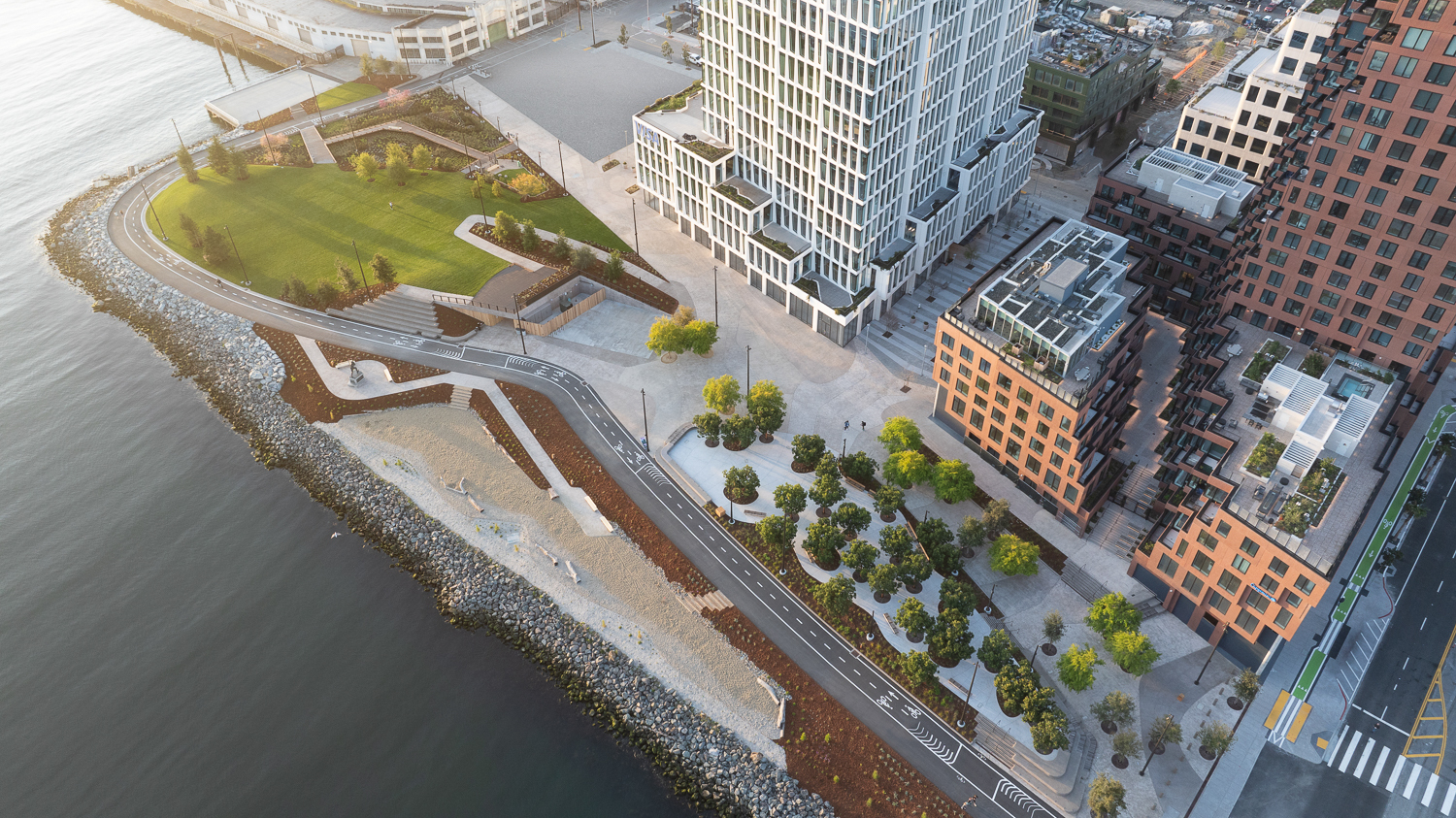
2. Structure for Success
In construction we say that the enemy of our projects is complexity. When you have six entities comprising the owner (not including the SFFD Fire Marshall and BDI Code Enforcement), and three entities comprising the project delivery team, decision-making to support the schedule is essential. We needed to build an integrated project structure.
Let’s be clear – as the Partnering Facilitator, I walked into a highly functioning Executive Team of MRP, Port of San Francisco, and the City who had already been meeting on a monthly basis and who had invested in trusting relationships over many years. Where Partnering really helped and where I added value (as the Facilitator for the San Francisco Collaborative Partnering Steering Committee and with construction delivery), was twofold:
We helped organize a broader and more inclusive Executive leadership team
We set up a forum so the owner team could hear directly from the field representatives and marshal resources to support the construction tempo
When I build Executive Partnering Teams, I like to have small, high-level people who can help with strategy, culture, and marshaling resources. Our “small” Executive Team was comprised of 18 people, and each of them had an essential purpose. Each of the key entities participated in a 1-hour Zoom call every other month. We would develop the agenda, share it in advance, and start each call with a project briefing.
In the kick-off with the Executives, we established the Phase 1 Goals, and for follow-up, we would give a short project briefing on the budget, schedule, and construction delivery updates. We would also queue up 2-3 key executive topics and brainstorm on those issues, establish completion dates and owners. Our conversations were open, direct, and yet supportive of the mission. Every single entity who participated needed to step up in some way during the project, and this Executive team helped save the Port millions through its leadership and decision-making.
We also developed a Task Group Partnering process to help create a forum for the Superintendent, the Webcor Leadership team, and MRP to share feedback and strategize with the project oversight team. While the Executive Team was focused on strategy, the Task Group was focused on tactics. We took over one of the bi-weekly Task Force meetings with our Partnering session every two months and used it to help this tactical group celebrate successes, look at the job at a 10,000-foot level, and identify risks and constraints. It was common for the Executive Team to reach out to key staff, and we would add key people to the Task Force’s “Core Team” to help resolve specific issues or constraints. Again, this format was practical, and it was remarkable how much we accomplished via Zoom with this group.
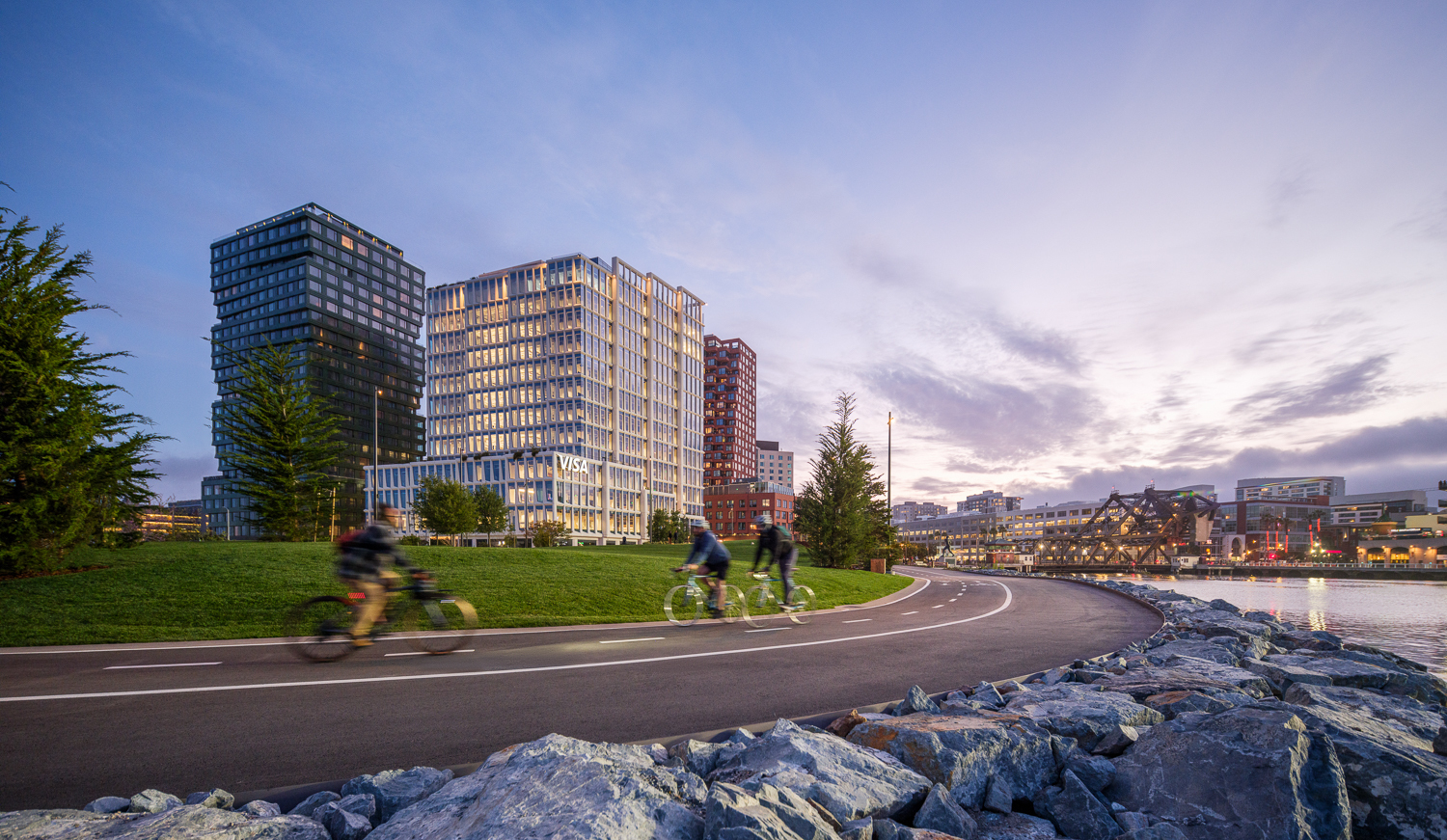
3. Service Orientation
To me, what stood out about this team and the culture of the project was that it was a service-oriented group. Simon Sinek wrote, “Leaders are the ones willing to look out for those to the left of them and those to the right of them. Leaders are the ones who are willing to give up something of their own for us. Their time, their energy, their money, maybe even the food off their plate. When it matters, leaders choose to eat last.”
The Mission Rock Program benefited from this type of leadership from each entity supporting the project. It was funny: When we kicked off the Executive team in March 2021, one of the attendees asked, “Each of us runs billions of dollars in capital programs each year. No offense… but why are we focusing energy on this $150M civil job?” Fortunately, most of the attendees were happy to provide insight into why this was so critical to a billion-dollar, interdepartmental multi-use program.
That kick-off partnering effort, where we talked about the “why” of the project and aligned the team around the mission, resulted in an incredibly supportive leadership team who helped us deliver on the complex PPP that has resulted in Affordable Housing and civic revitalization in a key location in San Francisco. Further, Visa is moving its corporate headquarters to Mission Rock this summer and China Basin Park extends the Bay Trail for San Franciscans and visitors, who can enjoy the views and shopping next to the ballpark for years to come.
As mentioned earlier, and as with every successful project I work on, each of the entities involved needed to step in to support the team. There were permitting challenges, procurement issues, changes in specifications, design iterations, technical challenges from bay water, and staff turnover. This project wasn’t perfect. The civil project started much later than had been hoped, and each segment of the team needed to invest additional money and time in order to achieve the original schedule goals. And yet, Partnering provided a venue for the team to measure and course correct progress, so they could hit their key dates for “The Canyons” to open for renters, for Visa to start their tenant improvements, and for China Basin Park to be open for the 2024 baseball season.
This team understood the mission and, through collaboration, was able to deliver on their promises to each other and to the community.
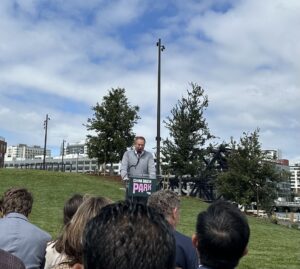
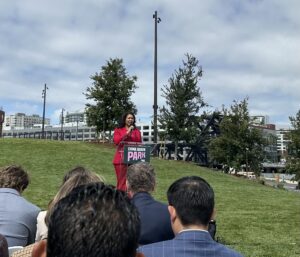
To summarize, I love the work we do, and in my role, I’m able to support many extraordinary projects. But as a lifelong Giants fan, this project and team will always carry a special place in my heart. And if I may make one last recommendation to my peers in the construction industry (and to be clear—this is for me to remember as well): Please make sure to attend ribbon-cutting events and family days! Show up and celebrate!
This is my twelfth year serving as a Partnering Facilitator, and I’ve worked on hundreds of projects. This is only the second time I’ve attended a ribbon-cutting ceremony. This event served as a reminder to pause, reflect on the incredible things we get to do, and share gratitude to the many people who help us build projects along the way.
So – when your team celebrates a great project, show up! And even better, come celebrate this team’s success by heading out to the ballpark and enjoying a Giants game this summer. Take a look over the right field wall or bring your family out to China Basin Park to visit the food trucks, the beach, or the great lawn… I’m confident your family will love it too!
-Rob
Rob Reaugh is President of OrgMetrics LLC. He facilitates the City and County of San Francisco Collaborative Partnering Steering Committee and currently works with San Francisco International Airport, San Jose International Airport, BART, Caltrans, and others. He holds a Masters’ Degree in Alternative Dispute Resolution.
For more information please contact Rob Reaugh, RobReaugh@Orgmet.com / (925) 487-2404 (cell), or OrgMetrics, (925) 449-8300.


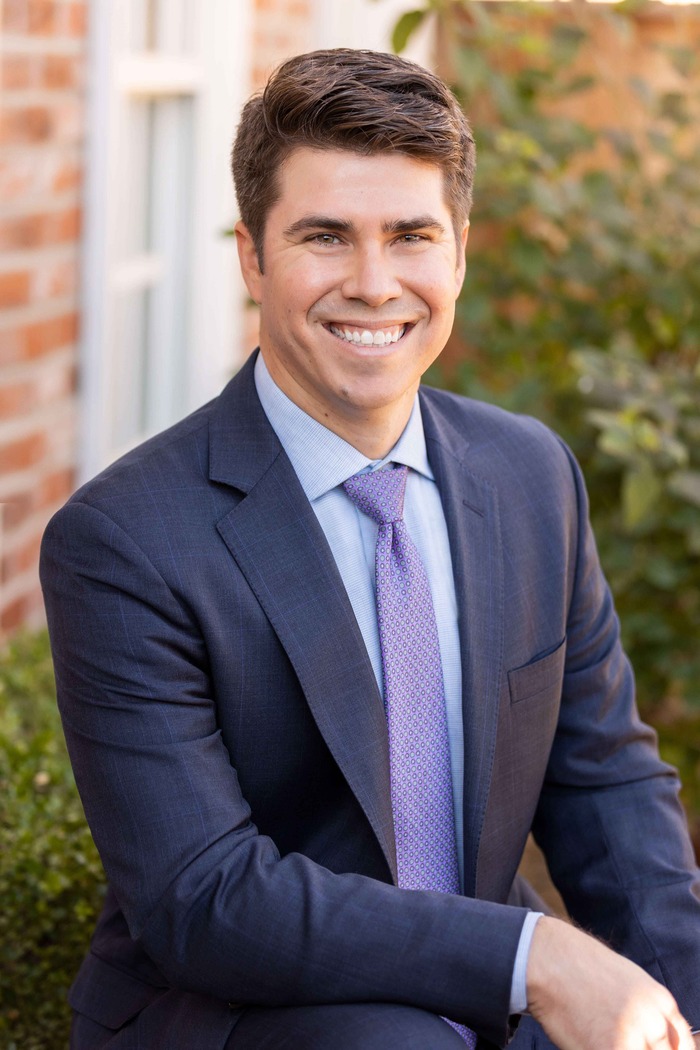 Rob Reaugh is President of OrgMetrics LLC. He facilitates the City and County of San Francisco Collaborative Partnering Steering Committee and currently works with San Francisco International Airport, San Jose International Airport, BART, Caltrans, and others. He holds a Masters’ Degree in Alternative Dispute Resolution.
Rob Reaugh is President of OrgMetrics LLC. He facilitates the City and County of San Francisco Collaborative Partnering Steering Committee and currently works with San Francisco International Airport, San Jose International Airport, BART, Caltrans, and others. He holds a Masters’ Degree in Alternative Dispute Resolution.